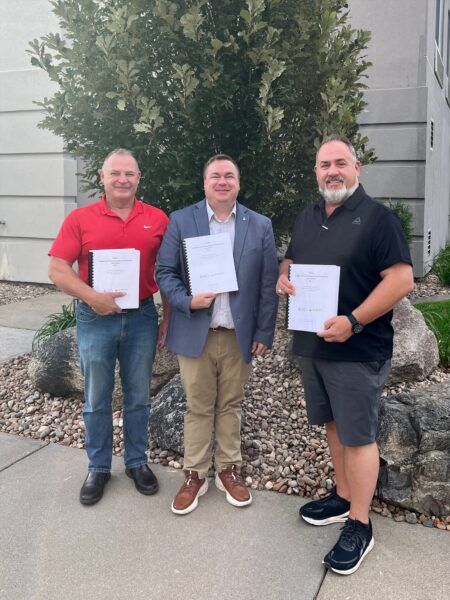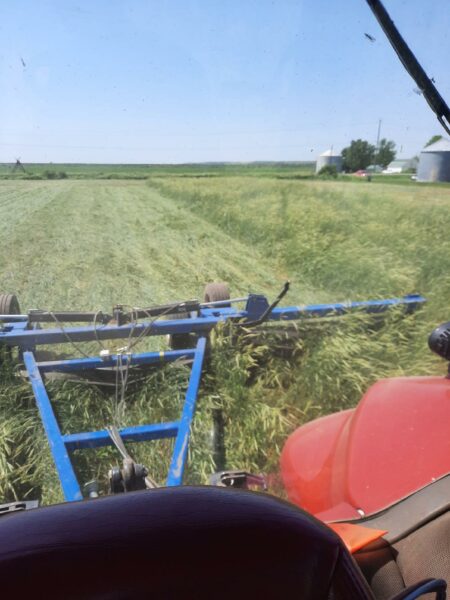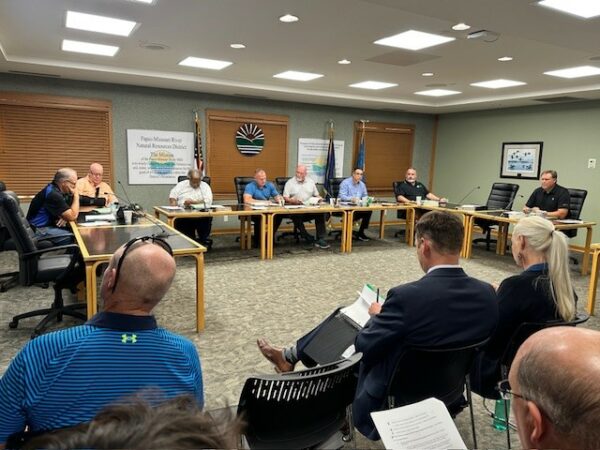Papillion Creek Watershed Project
Improvement Plan Approved
Plan to provide environmental and safety benefits to eastern Nebraska communities
LINCOLN, Nebraska – In August 2024, the U.S. Department of Agriculture’s Nebraska Natural Resources Conservation Service (NRCS), in partnership with the Papio-Missouri River Natural Resources District (Papio NRD), received official approval on the Papillion Creek Watershed Project Improvement Plan. The plan, an extension of an effort that began in 1966, promises to deliver significant environmental and safety benefits to residents across Washington, Douglas, and Sarpy counties.

The original planning effort led to the construction of 30 grade control structures, which have been instrumental in reducing flooding and stream channel erosion within the watershed. Building on this foundation, a local group, the Papillion Creek Watershed Partnership (PCWP), was formed in 2001 to identify future projects to further protect and enhance the watershed.
In 2019, the Papio NRD utilized the NRCS Watershed Protection and Flood Prevention Operations (WFPO) program, which has been critical in advancing the latest supplemental plan, which identifies 40 new watershed protection projects aimed at stabilizing degrading streams, reducing erosion and sediment, mitigating flood damage, and improving public safety.
NRCS contributed $560,000 toward the completion of the plan, enabling the Papio NRD to qualify for additional NRCS financial assistance for developing detailed project designs, anticipated to begin in 2025.
“NRCS is proud to provide both technical and financial support to the Papio-Missouri River NRD,” said Nebraska State Conservationist Rob Lawson. “Our top priority is to help local sponsors identify and complete watershed projects that enhance natural resources and ensure public safety.”
The Papillion Creek Watershed, spanning 245,800 acres in eastern Nebraska, includes a large portion of Omaha and the surrounding communities of Papillion, Elkhorn, Millard, and Ralston. The projects outlined in the Supplemental Plan are designed to address the pressing environmental challenges faced by these rapidly growing areas.
“The Papio NRD appreciates our strong working relationship and strategic partnership with the NRCS,” said Papio NRD General Manager John Winkler. “This is just one more textbook example of how partnerships maximize public safety and the wise management of our natural resources while simultaneously reducing the reliance on local property taxes and other scarce local resources. Nebraska has the very best natural resource management system in the country, and arguably the world, and this type of project makes us that much better,” said Winkler.
The Natural Resources Conservation Service’s Watershed Protection and Flood Prevention Operations (WFPO) program provides technical and financial assistance to states, local governments and tribes to plan and implement authorized project plans for completing numerous watershed enhancements.




